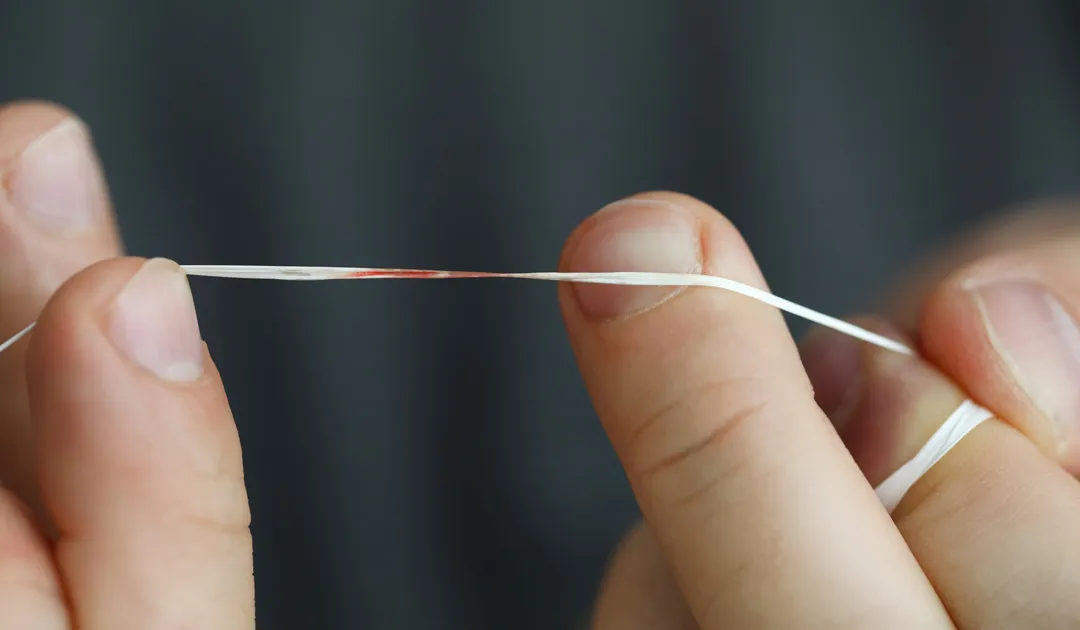Why Gums Bleed After Flossing? Stop The Bleeding

Bleeding gums after flossing can be a concerning and frustrating experience, especially for those who prioritize their oral health. While it might seem counterintuitive that an activity aimed at cleaning and protecting your teeth and gums could lead to bleeding, understanding the reasons behind this phenomenon can help alleviate concerns and guide you towards healthier gums.
Understanding Gum Bleeding
Gum bleeding, or gingival bleeding, is a symptom that indicates your gums are inflamed or irritated. This inflammation can be due to a variety of factors, including but not limited to, poor dental hygiene, gum disease (gingivitis or periodontitis), and even certain medical conditions or medications.
Reasons for Bleeding After Flossing
Poor Flossing Technique: Aggressive flossing can cause trauma to the gums, leading to bleeding. If you’re flossing too hard or using a sawing motion, you might damage the delicate gum tissue around your teeth.
Gingivitis: This is an early stage of gum disease, characterized by inflammation of the gums (gingiva). It’s caused by the accumulation of plaque—a biofilm of bacteria—on your teeth. If plaque is not removed regularly, it can lead to red, swollen, and bleeding gums.
Periodontitis: A more advanced stage of gum disease, periodontitis involves not just the gums but also the periodontal ligaments and bone that support the teeth. It can cause gums to recede and form pockets that are prone to bleeding.
Vitamin Deficiencies: Lack of certain vitamins, such as Vitamin C or K, can affect the health of your gums and make them more susceptible to bleeding.
Hormonal Changes: During pregnancy, puberty, or menopause, hormonal fluctuations can affect the blood vessels in your gums, making them more likely to bleed.
New to Flossing: If you’ve just started flossing, especially after a long period of not doing so, your gums might bleed due to the sudden introduction of this cleaning method. Over time, as your gums become healthier and more accustomed to flossing, the bleeding should stop.
How to Stop the Bleeding
While it’s natural to want the bleeding to stop immediately, addressing the underlying cause is crucial for long-term gum health. Here are some steps you can take:
Improve Your Flossing Technique: Use a gentle, curved motion to guide the floss around the edge of each tooth in a “C” shape. Be sure not to snap or force the floss between your teeth.
Regular Dental Hygiene: Commit to a thorough oral hygiene routine that includes brushing your teeth at least twice a day with a fluoride toothpaste and flossing once a day. Using an antibacterial mouthwash can also help reduce plaque and gum inflammation.
Visit Your Dentist: Regular check-ups can help identify any underlying issues, such as gum disease. Your dentist can provide a professional cleaning and guide you on how to maintain healthier gums.
Maintain a Balanced Diet: Eating a diet rich in fruits, vegetables, and whole grains can help support your overall health, including your gum health. Foods high in Vitamin C (like citrus fruits and bell peppers) and other essential nutrients can help keep your gums healthy.
Stay Hydrated: Drinking plenty of water helps keep your mouth moist and can aid in the healing of inflamed gums.
Consider a Waterpik: For some, using a water flosser (or oral irrigator) can be gentler on the gums than traditional flossing, especially if you have sensitive teeth or gums.
Preventing Future Bleeding
Prevention is key when it comes to maintaining healthy gums. Here are a few additional tips:
- Brush Gently: Use a soft-bristled toothbrush and avoid brushing too hard, which can damage your gums.
- Monitor Your Gum Health: Keep an eye on the color and texture of your gums. Healthy gums are firm, pink, and do not bleed easily.
- Avoid Smoking and Tobacco: These habits can significantly increase your risk of developing gum disease and other oral health issues.
Conclusion
Bleeding after flossing can be a temporary and treatable condition for many people. By understanding the reasons behind the bleeding, improving your oral hygiene practices, and possibly adjusting your diet and lifestyle, you can work towards stopping the bleeding and achieving healthier, stronger gums. If the bleeding persists or you notice other symptoms like pain or loose teeth, it’s essential to consult a dental professional for a personalized assessment and treatment plan.
Why do my gums bleed after flossing?
+Gum bleeding after flossing can be due to several reasons including poor flossing technique, gingivitis, periodontitis, vitamin deficiencies, hormonal changes, or being new to flossing. It’s a sign that your gums are inflamed or irritated.
How can I stop my gums from bleeding after flossing?
+To stop gum bleeding, improve your flossing technique to be gentler, maintain regular dental hygiene practices, visit your dentist for professional cleanings and advice, and ensure you’re getting a balanced diet rich in vitamins and minerals that support gum health.
Is it normal for gums to bleed every time I floss?
+No, it’s not normal for gums to bleed regularly after flossing. While occasional bleeding might happen, especially if you’re new to flossing or have just started taking better care of your teeth, persistent or frequent bleeding is a sign of an underlying issue that needs attention.


